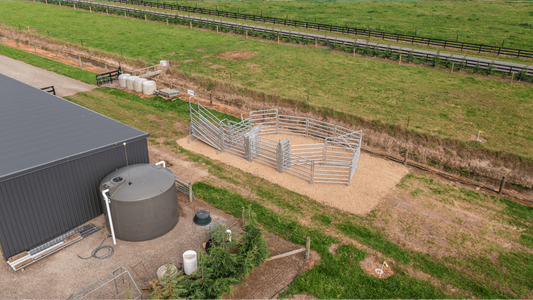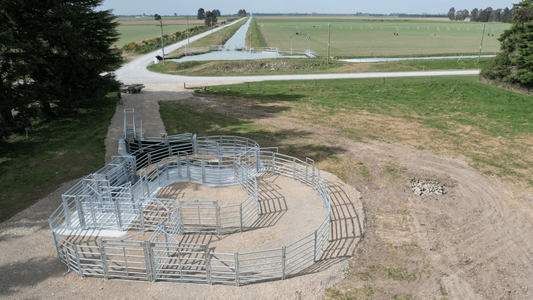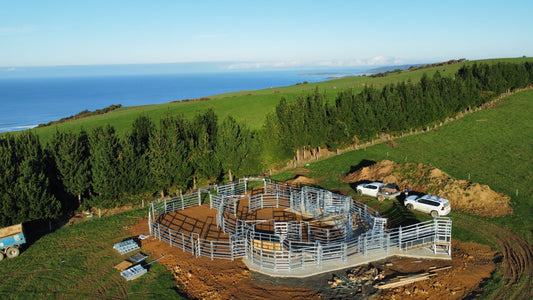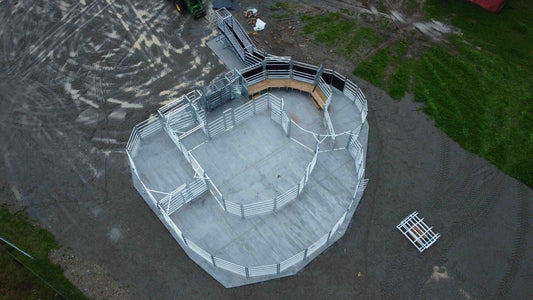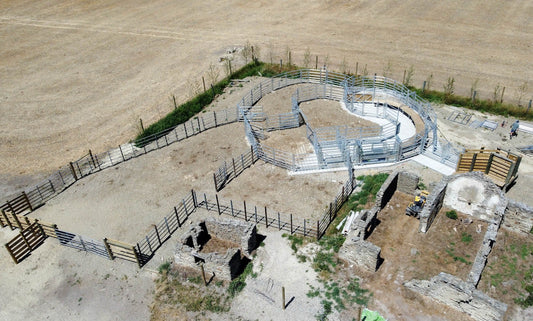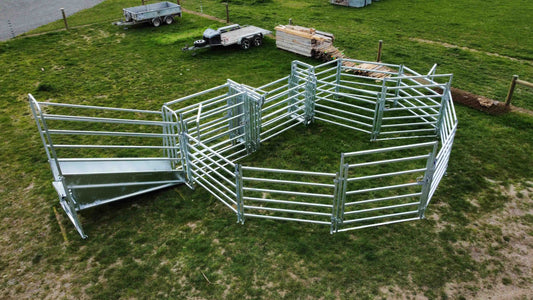Dr. Temple Grandin is a world-renowned animal behaviourist, known for her immense contribution to improving livestock handling systems. As an advocate for humane treatment, her innovative ideas have transformed the way animals are managed on farms globally, and they're having a notable impact on New Zealand farming as well.
Let's delve into how her innovative ideas are shaping the future of farming here and around the world.
 Photo Credit: https://darachcroft.com/
Photo Credit: https://darachcroft.com/
Firstly - the Challenges in Livestock Handling
Traditionally, livestock handling has been riddled with challenges due to inadequate facilities, insufficient training, and a lack of understanding of animal behaviour. This has led to increased stress for animals, and workers, and reduced overall productivity. However, as more and more farmers prioritise animal welfare, there is a growing need for improvements in handling systems.
Dr. Grandin's Principles: Creating Low-Stress Environments for more effective systems
Dr. Grandin's principles focus on creating low-stress environments for animals, promoting calm handling and reducing the risk of injury. Some of her key insights include:
Understanding the animal's perspective: Dr. Grandin emphasises that observing livestock behaviour is crucial for designing effective handling facilities. This means considering factors such as lighting, noise levels, and using natural animal instincts to guide movement. The ability to adapt and make changes is also important.
Curved race designs: Dr. Grandin's designs often incorporate curved races, which encourage animals to move forward without resistance. These races help reduce stress levels and facilitate smoother handling.
Non-Slip Flooring: Good footing is essential for animal comfort and safety. Dr. Grandin emphasises the importance of non-slip flooring to prevent injury and maintain smooth animal flow.
 Photo Credit: https://darachcroft.com/
Photo Credit: https://darachcroft.com/
Adapting Dr. Grandin's Principles for New Zealand Farmers
What’s been interesting about exploring her work is how often we’ve noticed Kiwi farms already implementing what she advocates for. In our travels around NZ we’ve found most farms integrate one or more of Dr. Grandin's principles into their yards, ensuring our farms are working great for farmers and animals alike.
So what should you be looking for in a yard if you are considering Dr. Grandin’s principles?
Anti-Bruise Rails: Anti-bruise oval rails reduce injuries and discomfort during handling, ensuring a calm and stress-free environment for the animals. This rail profile also has a positive impact on meat quality due to the reduction in sharp points.
Adaptable Design / Continuous Improvement: Often a gate or panel needs to be moved to improve flow. This is varied based on cattle types or farm locations and you as the farmer will know the exact bottlenecks that need to be countered. The best yards of ours have been based on a tested design but had small changes made to fit their unique use and site. As our understanding of animal behaviour and welfare evolves, so do yard designs. We often visit farms where the owners or manager are constantly looking for the next small improvement instead of assuming they’ve already got it on lock.
Appropriate Race Curvature: Where curved races are used in a yard design, it’s important to ensure the curvature is not too aggressive. An animal standing at the entry to the race must be able to see 2-3 body lengths in front of them before it turns.
Lighting: It’s important to consider the positioning of certain parts of your yards with respect to lighting and shadows. Cattle do not like to look directly into light, so it’s advised that the position where cattle enter a race and or Crush are positioned to avoid staring directly into sunlight. Similarly with shadows. Avoid any shadows in areas where cattle are moving forward into more confined spaces to reduce baulking and encourage natural flow.
Capacity: Overfilling yards is a key contributor to inefficient stock flow. Stress levels in cattle increase significantly when they’re in an overcrowded pen. Moreover, when cattle can’t turn and move, they don’t flow. It’s important to consider cattle numbers and mob sizing when you go to build a set of cattle yards. It’s important to consider the concept of Working Capacity vs. Holding Capacity in different parts of a yard.
Farmers who implement these concepts in their yard designs report reduced stress levels in livestock, increased productivity, and improved overall farm operations.
Moreover, the focus on animal welfare aligns with the global trend toward ethical farming practices. New Zealand farmers who adopt these principles not only contribute to improved animal welfare but also benefit from improved cattle management in general.


